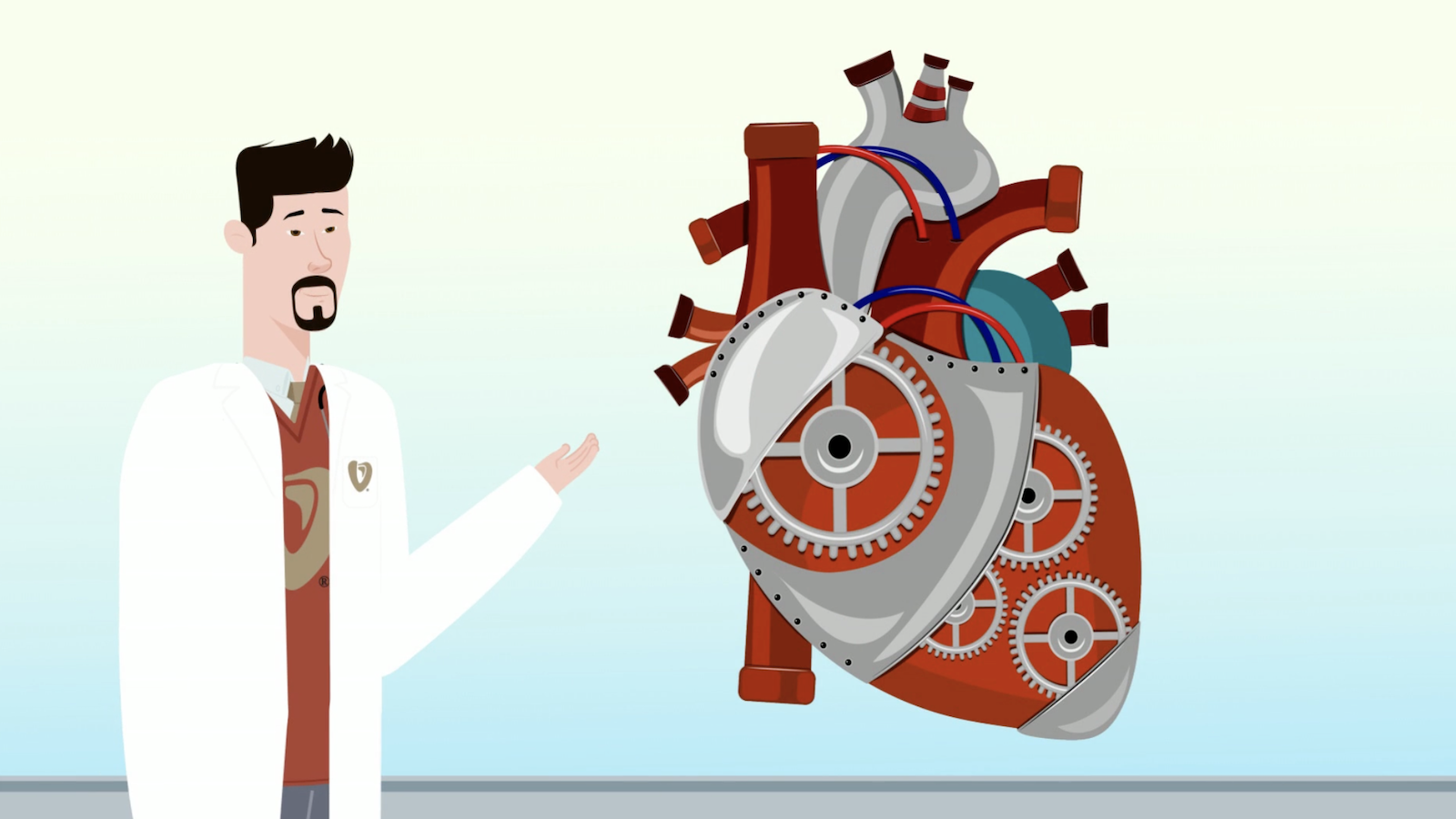Implantable Cardioverter Defibrillator
Any irregularity in your heart’s natural rhythm is called an arrhythmia. Almost everyone’s heart skips beats; these mild palpitations are usually harmless. But there are about 4 million Americans who have recurrent arrhythmias, and these people usually need treatment for their condition.
How does the heart normally control its beat?
The heart’s “natural pacemaker” is located in the sinoatrial (SA) node of the heart’s upper-right chamber (the right atrium). The SA node controls your heart rate by sending electrical impulses to the heart muscle. When the SA node dictates, the upper chambers of the heart (the atria) contract. The contraction signal passes through a second node called the atrioventricular (AV) node; the AV node checks the signal, then passes it on to the lower chambers of the heart (ventricles) to make them contract.
The SA node typically makes the heart contract at a standard rate. But if it does not function properly or is under stress, the heart rate can become irregular. If this problem gets worse, you may need a pacemaker or an implantable cardioverter-defibrillator to restore your regular heart rate.
Am I a candidate for an implantable cardioverter defibrillator (ICD)?
If you have fainted or your heart is not pumping correctly, an ICD may be the best option for you if medication does not work.
ICDs are generally successful for patients who have:
- Ventricular tachycardia – the lower chambers of the heart beat independently, faster than 100 beats per minute.
- Ventricular fibrillation – the muscle fibers of the lower chambers of the heart contract in a fast, uncoordinated manner.
- Sudden cardiac arrest caused by arrhythmias.
What is an ICD, and how is it inserted?
An ICD is about the size of a computer mouse. It has a pulse generator with a battery and numerous circuits, as well as 1 or 2 wires (leads).
The operation to implant an ICD is not considered open heart surgery. It is quite a common procedure, only lasting about 2 hours. The ICD is implanted under the skin near the collarbone or above the waist. The leads go in or on top of the heart and are connected to the ICD. Some newer devices can be inserted by a simple catheterization procedure. A 1-night hospital stay is recommended, and antiarrhythmic medicines may be prescribed.
Once the ICD is implanted, doctors perform electrophysiology studies to confirm that the ICD is properly monitoring your heart rate. After that, if ventricular tachycardia or fibrillation occurs, the ICD will send out a controlled burst of impulses (“overdrive” pacing) to restore your normal heart rhythm. The ICD will also record the date, the time, and the particular electrical impulses it used to restore your heart rhythm. (Some newer ICDs can also function like a pacemaker to speed up the heart rate if it becomes abnormally slow—a condition called bradycardia.) The ICD will also “shock” the heart if needed.
How does the “shock” feel?
Most patients say they feel a sudden jolt or thumping in their chest. Others black out and may not feel anything at all. If someone is touching you, they may feel a minor muscle jerk but no pain. Most doctors will want you to reach out to them if you have two or more shocks within 24 hours.
What kind of follow-up will I have once I have my ICD?
Regular check-ups will be required. Some may be done by phone (transtelephonic monitoring). The ICD is managed by a device known as a programmer that checks battery power and device usage. It can also adjust the ICD’s settings to make the ICD work more effectively. The battery life of an ICD ranges from 4 to 8 years. Once the battery runs down, a new ICD is needed, but the leads typically do not need to be replaced.
How will the ICD affect my day-to-day life?
- Watch your surroundings and avoid heavy equipment with strong magnetic fields or electric fields (such as powerful antennas, arc welders, and industrial equipment).
- Do not operate a vehicle for 6 months after your implantation or after a shock.
- Keep your cell phone at least 6 inches away from your ICD, on the opposite side of your body.
- Always consult with your doctor if you are unsure whether a particular activity is safe for you.

